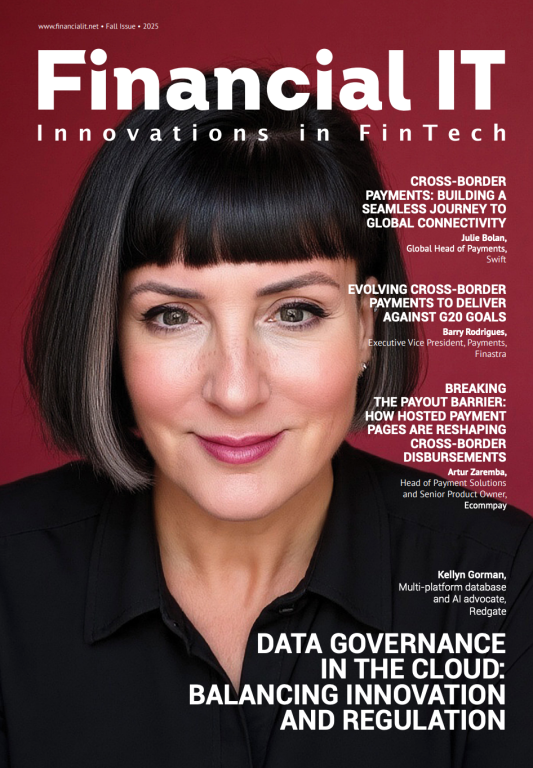Blockchain grown up: why it’s the world of physical commodities that realised the digital hype

- Adam Vile, CTO at VAKT
- 07.06.2019 12:00 pm Blockchain
We are entering a new era for blockchain. The initial hype and exaggerations are beginning to fade and, as they do, we are able to take a clearer, more sober-minded view. Where can blockchain really deliver on its revolutionary promise, and where is it a forced fit?
With its initial application in cryptocurrency, blockchain felt like a kick away from the physical, analogue world towards a more digital future. Yet now, as we start to see mature, commercial blockchain implementations, we find ourselves very much back in the physical world, notably physically delivered commodities trading.
Why is that? What is it about physical commodities trading that has made it fertile ground for grown-up blockchain?
Square pegs, square holes
There is a temptation with blockchain – as with all exciting new technologies – to rush to apply it to anything and everything. A lot of good can come out of that flood of creativity and innovation, but there are also a lot of instances of square pegs and round holes.
A more considered approach involves going back to basics. This means looking at the fundamental characteristics of distributed ledger technology: it is decentralised, immutable and tamper-proof by design.
Then, we must look for applications and industries that mirror those structures and where the most pressing needs match those characteristics.
So, we can discount some markets straightaway. Exchange-traded equities, for example, are relatively centralised by design. The same can be said for something physical like the UK’s national gas grid, which acts as a central node for the market. If blockchain excels in decentralised applications, these are not natural places to look for best fit.
Many physical commodity markets though, look very much like square holes. Take crude oil cargos, for example. This is an extremely decentralised industry, with ships ferrying crude to ports around the world, often changing course en-route as cargos are traded. Both physical cargos and information flows are highly dispersed.
Specifically, look at post-trade processing. What begins looking like a relatively simply exchange between Trader A and Trader B, gets a lot more complicated. All sorts of parties from banks providing trade finance, to customs, inspectors and shippers will need information from the traders, who will also be exchanging information with one another. This haphazard web of information flows is a recipe for data discrepancies and losses through missing emails and paperwork, and human error.
In theory, that could be solved by setting up a single centralised system, bringing in all relevant data points and granting selective access. But really, that idea is a non-starter. It would make bilateral communications too complex, and asks all parties involved to give their data – their crown jewels – to a central counterparty. This approach also lacks two key advantages of blockchain: immutability and tamper resistance.
The strength of blockchain is that it is highly resistant to tampering. To add a doctored block to the chain would require control over an impractically large share of the network. A lone or group of errant blocks would quickly be rejected.
Then, once a block is added, it is immutable – there is no editing after the fact. This makes it effectively impossible for a bad actor to seize control over the information. Crucially, this allows companies which don’t trust one another – and are often in direct competition – to work together without either relinquishing control of their data or information flows to a central third party that might be compromised.
Additionally, in many physical commodities industries – from crude oil to gold and diamonds – fraud and corruption remain serious challenges. A blockchain solution makes it much harder to insert false information about, for example, price or provenance.
So, physical commodities post-trade processing and blockchain are a perfect match in that blockchain respects the underlying infrastructure and needs of the industry: a square peg and a square hole.
Positive and negative alignment
Equally, this type of market is suited to blockchain because of what it doesn’t need. There is a lot of excitement about using blockchain for front-end trading, across asset classes, not just commodities. However, a feature of these markets is speed; if you’re slower than the competition, you will suffer. Blockchain is not built for speed.
It boils down to a choice between consistency, availability and partition tolerance. Generally speaking, you can pick two. If speed is your goal, you want to focus on availability and partition tolerance – meaning each part of the system can function independently. In such a system, it’s very likely that data will be available immediately from one or more parts of the system. However, this opens the door for inconsistencies between those component parts.
This works for a system like Visa. There, availability and speed are king. Consistency is good, but it’s easier to rectify errors than manage outages, and long payment delays are anathema for the busy high-street retailer trying to serve a queue of customers.
By contrast, blockchain gives you consistency and availability. All participants consistently get the same data as the ledger is immutable. Availability is high as it is decentralised, meaning very little chance of widespread outages. Partition tolerance is out though, contrary as it is to the principle of distributed ledger technology. As a result, you don’t get speed, but that’s generally not an issue for post-trade processing, where physical delivery may take days or weeks. In this world, doing things right is far more valuable than doing things quickly.
Physical oil trading – specifically post-trade processing – is therefore a strong candidate for a relevant and revolutionary application of blockchain. It is a decentralised market where consistency and availability of data trump the need for speed, and that stands to gain significantly from improvements to efficiency, accuracy and fraud protection. It is an industry that has long looked for a better way of doing things, but could only ever pose a centralised solution that was a poor fit for a highly competitive, sensitive and dispersed industry. In this context, blockchain is genuinely game-changing.
As we move beyond blockchain hype to a more considered appreciation of the technology’s strengths, we will achieve two things. First, we will find fewer promising companies and talented people trying to make square pegs round, or round holes square. Second, we will make far more progress. We are now seeing the difference blockchain can make in post-trade processing for commodities – it’s blockchain grown-up, and it was the world of physical commodities – starting with crude oil cargos – that realised the digital hype.


























